The Air Show
Today,we go to an air show. The University of Houston's College of Engineering presents this series about the machines that make our civilization run, and the people whose ingenuity created them.
When I was a child, what I wanted most, and my father wanted least, was to go the Minnesota State Fair with its crowds, rides, glitz, and endless promise of excitement. Well, 75 five years later, the Wings Over Houston Air Show came to town. So I went.
Here was my childhood State Fair adventure. Hot dogs, a mile of airplanes on display, kiosks, games, sentimentality, flag-waving ... But at its core was a kind of history lesson we can't get from books -- an open-air textbook on the history of the past 75 years of flight from the early P-40 fighter onward.
A terribly important part of that history is a clear view of the visceral side of flight. By the time it was over, anyone could understood how we've been driven by some elemental atavistic need in our psyche to keep building better airplanes.
So, what were the elements of this lesson? First, there was sound: Not just the explosive roar of jets passing at speeds only a hair slower than sound. We were also taught to hear the difference between the whine of the Mustang's water-cooled engine and the deep rumble of the Thunderbolt's radial engine -- a difference that's hounded the entire history of piston engines.
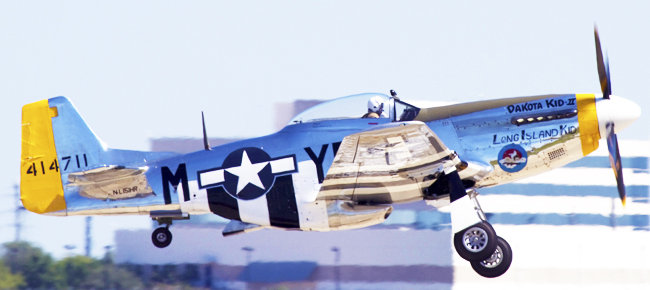
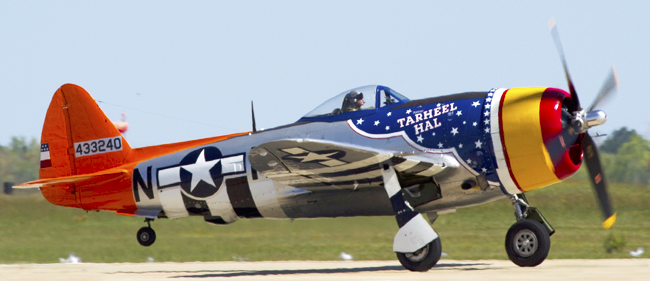
Above a P-51 Mustang (with an inline liquid-cooled engine) taking off. Below, a P-47 Thunderbolt (with a radial air-cooled engine) taking off.
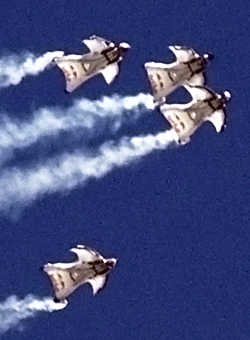 And there was diversity. We saw aircraft all the way from the tiniest acrobatic airplane to the B-29 Superfortress. And, at an even smaller scale we watched four men in flight suits jump from an odd British cargo plane. They flew back toward Earth using the webbing between their arms and legs -- like flying squirrels.
And there was diversity. We saw aircraft all the way from the tiniest acrobatic airplane to the B-29 Superfortress. And, at an even smaller scale we watched four men in flight suits jump from an odd British cargo plane. They flew back toward Earth using the webbing between their arms and legs -- like flying squirrels.
On it went for five hours: A formation of four generations of Air Force fighters; stunt pilots doing things that made us want to close our eyes; a stunt helicopter flying loops close to the ground. I found the re-enactment of the Pearl Harbor Attack unsettling because my mind drifted back to that terrible day when this 11-year-old boy saw his world completely upended.
The frosting on the cake was incredible formation flying. The civilian Heavy Metal Team, flew four Russian jet training planes and one MIG-17 in formations so tight that the airplanes overlapped in almost any angle we saw them. The Snowbirds were Canadian Air Force pilots flying training jets in 9-airplane formations. And they were equally hair-raising, but they went more for beauty of formation than raw drama.
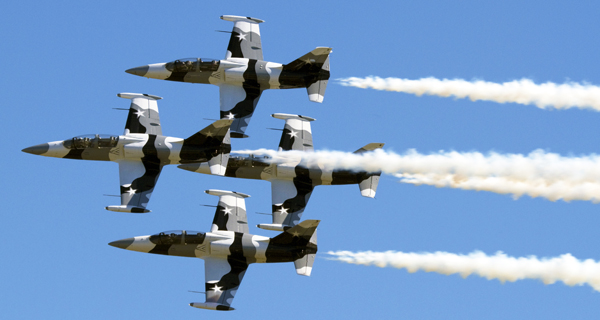
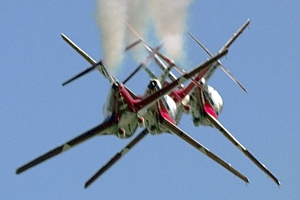 So back to my point: The history of flight is the history of a body/machine/psyche interaction. We can never really understand how flight became what it is in the world today without once experiencing that gut-twisting intensity at close quarters.
So back to my point: The history of flight is the history of a body/machine/psyche interaction. We can never really understand how flight became what it is in the world today without once experiencing that gut-twisting intensity at close quarters.
It's an experience we were privileged to have on Saturday. Take a look at my photos of the occasion in the posted episode. This was a place where I realized that something quite profound lay within the fairgrounds fun of a sunny day.
I'm John Lienhard, at the University of Houston, where we are interested in the way inventive minds work.
The 27th Annual Commemorative Air Force Wings Over Houston Air Show ran on October 15 and 16, 2011 at Ellington Airport.
Click here for my slideshow of the air show.
For more on radial vs. inline engines see Episode 2558. All photos by John Lienhard.
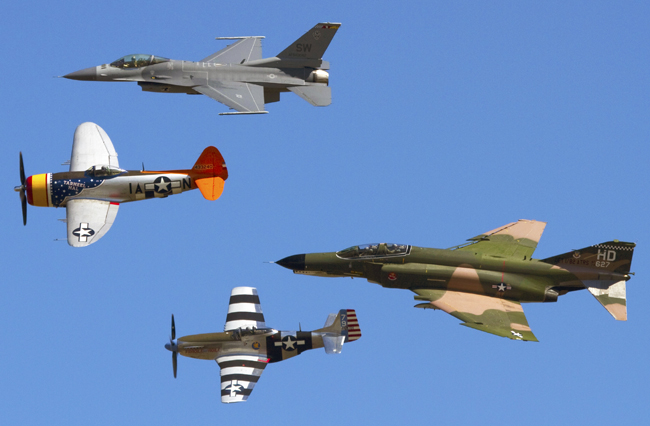
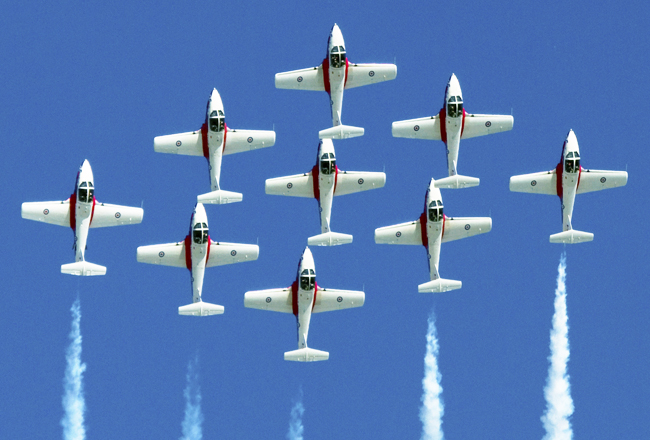
Upper photograph (top to bottom): f-16 Viper, P-47 Thunderbolt, F-4 Phantom, and P-51, Mustang. Lower Photograph: The Canadian Snowbirds in formation.
This episode was first aired on October 19, 2011